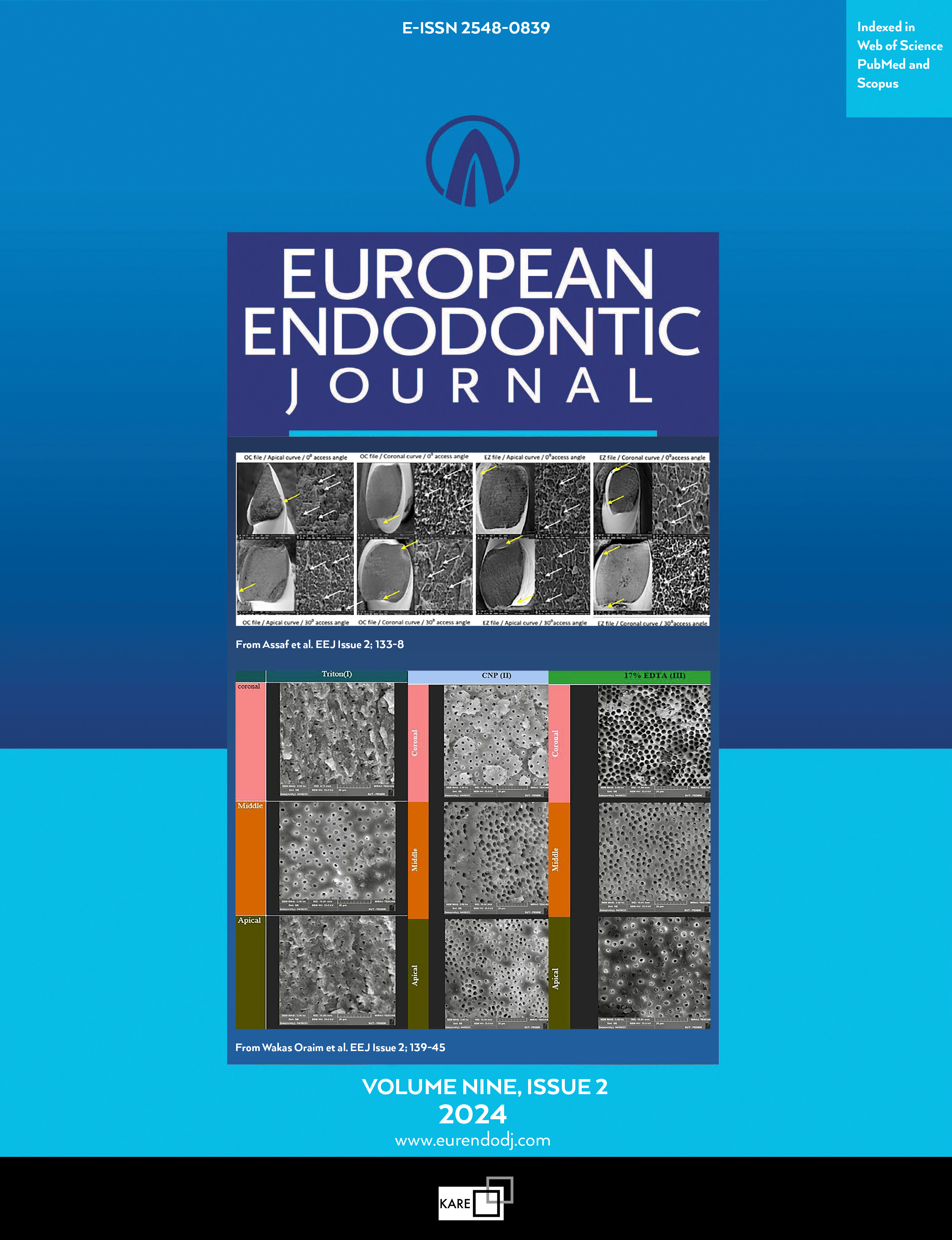Metrics
2022 IMPACT FACTOR
5 year Impact Factor
Eigenfactor
2022 CiteScore
Journal Citation Reports (Clarivate, 2023)(Dentistry, Oral Surgery & Medicine (Science))
Accuracy of Software-Based Three-Dimensional Root Canal Length Measurements Using Cone-Beam Computed Tomography
J. P. Tchorz1, K. T. Wrbas1, C. Von See2, K. Vach3, S. B. M. Patzelt41Department of Periodontology, and Endodontology Center for Operative Dentistry, University of Dental Medicine and Oral Health, Danube Private University, Krems, Austria; Department of Operative Dentistry and Periodontology, Center for Dental Medicine, Medical Center, University of Freiburg, Freiburg, Germany2Center for CAD/CAM and Digital Dentistry, Danube Private University, Krems, Austria
3Institute for Medical Biometry and Statistics, Faculty of Medicine and Medical Center - University of Freiburg, Germany
4Department of Prosthetic Dentistry, Center for Dental Medicine, Medical Center, University of Freiburg, Freiburg, Germany
Objective: This study aims to evaluate the accuracy of three-dimensional root canal length measurements performed by dentists with different experience levels using a special software based on cone beam computed tomography (CBCT).
Methods: A CBCT scan of an artificial resin maxillary molar was used to train dentists (n=65) in using the software (3D Endo, DentsplySirona, Ballaigues, Switzerland) as part of a continuing education course. At the beginning, each participant completed a questionnaire on endodontic and CBCT experiences. After comprehensive instructions, each participant performed an entire three-dimensional treatment plan by tracing the root canal anatomy between the apical foramen and the center of the canal orifice and simulating a straight-line access. The final root canal length was indicated after the virtual rubber stop of a simulated instrument was adapted to the adjoining cusp. To evaluate the individual accuracy in terms of trueness and precision, differences between the three-dimensional planning and the actual root canal length (ARCL) were calculated, and statistically analyzed.
Results: Mean absolute differences between the measurements with the 3D Endo software (n=260) and the ARCL were 0.30±0.22 mm. All measurements were within a limit of ±1 mm. The accuracy of root canal length measurements was significantly influenced by the type of root canal (p<0.0001). The smallest deviations were observed for the palatal root canal (0.18±0.13 mm), followed by the mesiobuccal (0.26±0.22 mm), the distobuccal (0.32±0.17 mm), and the second mesiobuccal root canal (0.46±0.24 mm).
Conclusion: Within the limitations of this study, the 3D Endo software enables reproducible and accurate root canal length measurements as part of a three-dimensional endodontic treatment plan. However, measurements should always be clinically verified, as root canal morphology has a statistically significant influence.
Corresponding Author: J. P. Tchorz
Manuscript Language: English
(874 downloaded)


